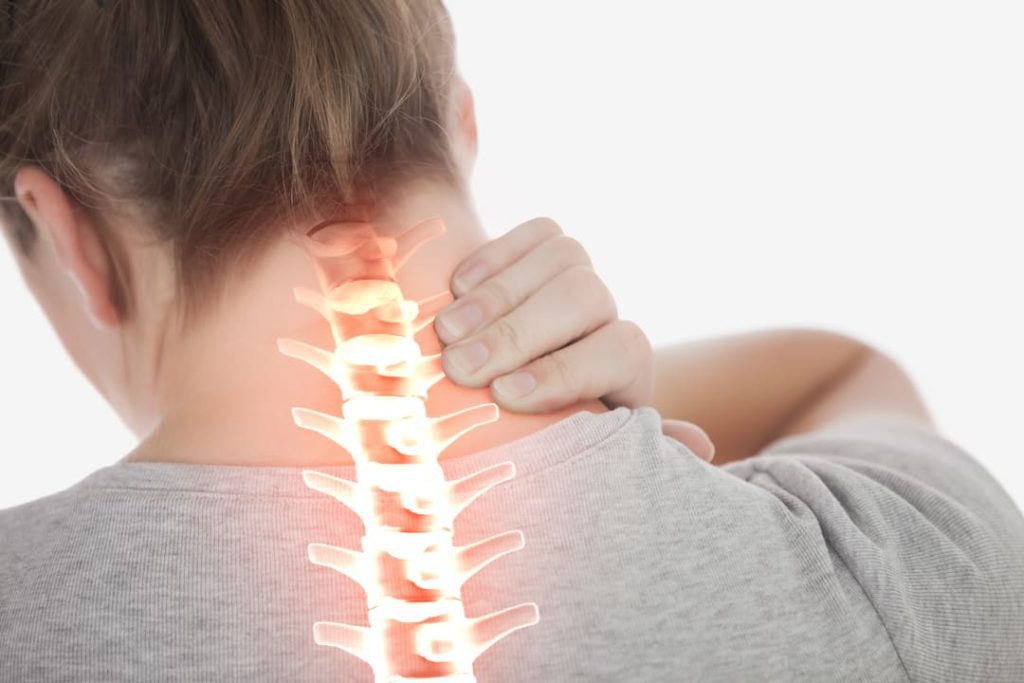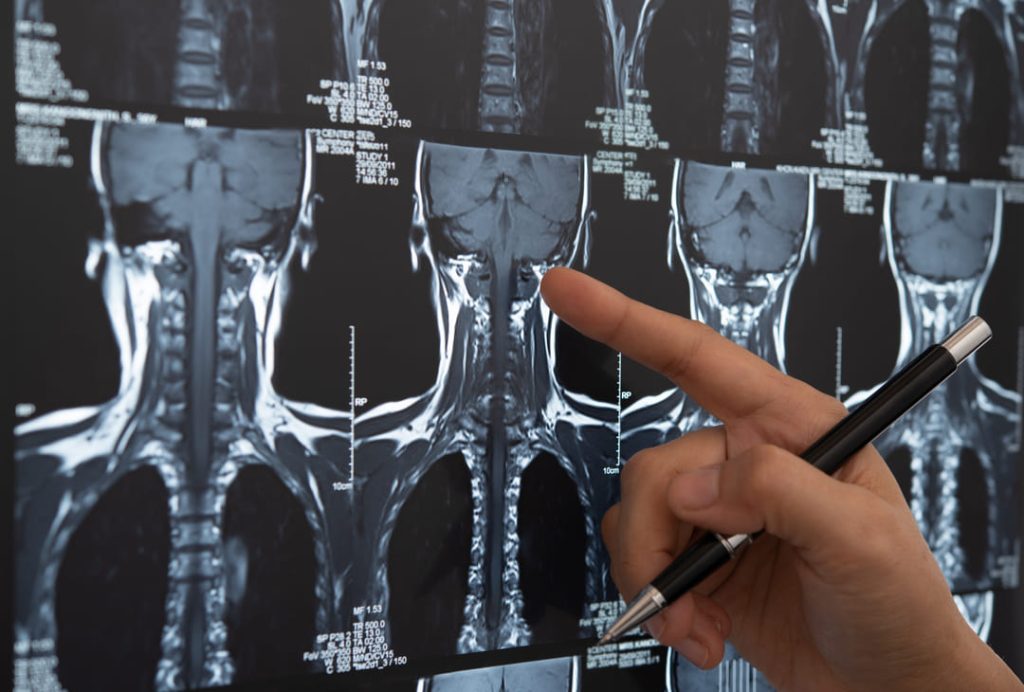Looking for Expert-Level VA Claim Answers?📱Call Us Now! 737-295-2226
Calling all veterans suffering from military neck! Did you know that you may be eligible for VA disability benefits?
So, let’s dive into the top five questions veterans have about filing and winning a VA claim for military neck.
Table of Contents

You DESERVE a HIGHER VA rating.
Take advantage of a VA Claim Discovery Call with an experienced Team Member. Learn what you’ve been missing so you can FINALLY get the disability rating and compensation you’ve earned for your service.
1. What is Military Neck?
Military neck is a condition where the curve in your neck (which is supposed to look like a gentle “C” shape) becomes straighter. You’ll also hear military neck called cervical kyphosis or kyphosis neck.
Military Neck Symptoms
Military neck can cause all sorts of symptoms that can seriously impact your daily life, including:
- A stiff neck that’s hard to move, especially when you try to turn your head from side to side
- Difficulty swallowing
- Instability walking
- Sharp pain that feels like a stabbing or stinging in your lower neck
- General soreness that’s not sharp, but still hurts
- Radiating pain from your neck into your shoulders and arms, which can feel like a burning sensation
- Problems with reflexes, sensation, or strength in your arms, which can make it hard to grip or lift things
- Frequent headaches that feel like pulsing or throbbing in your head
- Incontinence
If you’re experiencing any of these symptoms, it’s important to talk to your doctor. If you think your military service may have contributed to your neck problems, you may be eligible for VA disability benefits.
Military Neck Causes in Veterans
Military neck can be caused by all sorts of things, like poor posture, carrying heavy equipment, military training, or even sitting hunched over a computer for long periods.
Veterans who spend long hours sitting or standing in awkward positions, or carrying heavy gear, may be at a higher risk for developing military neck due to poor posture.
High-intensity physical training and military training exercises may also cause military neck in veterans due to the strain they put on the neck muscles.
Long deployments can lead to chronic neck pain due to extended periods of carrying heavy gear, sleeping in awkward positions, or exposure to blast injuries.
Repetitive motions such as lifting, twisting, and turning can cause muscle fatigue, leading to military neck in veterans.
Arthritis and degenerative disc disease can cause the loss of disc space, which alters the curve of the neck and leads to military neck.

Military Neck and VA Disability
To be eligible for VA disability benefits for military neck, you must meet specific requirements. Here are the key eligibility criteria to keep in mind:
- Your military service caused your military neck – You must have served in the military, and your neck condition must have been caused or made worse by your military service. This means that you need documentation showing that your neck pain or injury occurred during your service or was caused or aggravated by your military duties.
- You have current symptoms and documented medical evidence – You must have medical evidence to support your claim for disability benefits. This includes documentation of your diagnosis and evidence showing the severity of your condition today and how it affects your daily life.
- You must prove that your service directly or indirectly led to your military neck – Also called service-connection, providing evidence that your neck issues began while serving is one of the easiest ways to service connect your condition.
- Your military neck symptoms meet the VA’s minimum criteria – The VA uses a rating criteria system to determine the severity of your condition and the amount of disability benefits you may be eligible to receive. The rating criteria consider factors such as the range of motion in your neck, the pain you experience, and any associated symptoms such as headaches or numbness. We break down how the VA rates military neck below.
- You must file a claim for military neck – To receive VA disability benefits, you must file a claim with the VA. This involves providing evidence of your condition, completing necessary forms, and attending required medical evaluations.
2. How Can Military Neck be Service-Connected?
To receive VA disability for military neck, you must show a direct or secondary connection to your service.
Direct Service Connection
If you’ve been diagnosed with military neck, it may be considered directly service connected if you can prove that it occurred during your time in service. This means you must show evidence that you had the condition while serving or that it first manifested during your time in service. This evidence could include Service Treatment Records or private medical records.
Secondary Service Connection
Military neck may sometimes be considered secondary to a service-connected condition. For example, if you have a service-connected condition that caused muscle spasms or degenerative disc disease, and these conditions caused your military neck. In this case, your military neck could be considered secondary to your existing condition.

3. What Medical Evidence is Needed to Support a Military Neck VA Disability Claim?
The best medical evidence you can submit to support your VA disability for neck pain will show that you have current symptoms related to your military service through direct or secondary service connection. Without this evidence, it may be challenging to establish service connection and receive the disability benefits you’re entitled to.
You should provide all relevant medical records, including those from your service and any subsequent treatment you received for your military neck condition. This could include records from military hospitals, VA hospitals and clinics, private physicians, and chiropractors.
Additionally, your doctor may order tests such as X-rays, MRI scans, or CT scans to confirm your diagnosis. Any imaging may be necessary to support your claim. These tests can provide important evidence of any spinal abnormalities or degenerative changes causing your military neck condition.
You can learn how to access your veteran health records, including your military and VA medical records.
Expert medical opinions may also help support your claim. This may include a VA examiner’s opinion or an opinion from a private physician or specialist. A medical expert can help establish the link between your military neck condition and military service, which is critical to obtaining VA disability benefits.
Why a Nexus is Key
A nexus is a medical opinion establishing a link between your condition and your time in service or a service-connected condition. This can be provided by a medical professional. It can be challenging to establish a service connection for military neck without a nexus.

4. How Can Veterans File a VA Claim for Military Neck?
If you’re planning to file a VA disability claim for military neck, you can follow these steps:
- Submit an intent to file to the VA, indicating your intention to file a disability claim.
- Gather all the necessary evidence and documents to support your claim.
- Submit your claim to the VA electronically or via mail. Make sure to submit your military neck VA claim within one year of your intent to file.
- Await a decision from the VA on your claim, and if necessary, file an appeal for a denial or rating increase.
If you file electronically, starting an application online sets your effective date. You have one year to complete the application.
If you file via mail, submit an intent to file to the VA to set your effective date.
How to Track Your Military Neck VA Claim Status
To check your military neck or cervical kyphosis VA claim status on va.gov:
- Go to the “My VA” dashboard (top right corner of the page).
- Scroll down to the “Track Claims” section.
- Click the “View Status” button to see the detailed status and supporting evidence for a specific claim.
The VA claims backlog is real and filing a VA claim can take more than 150 days in 2024. Filing a fully developed claim for your military neck condition can help reduce how long you must wait.
5. What Kind of Disability Compensation Can Veterans Receive for Military Neck?
Generally, the VA will rate your military neck using the painful motion rule OR limited range of motion. Expect a rating of 10% to 40%, with limited range of motion resulting in a VA rating of 40%. First, let’s cover limited range of motion.
Military neck is usually rated using the general rating formula for diseases and injuries of the spine. The military neck VA rating formula gives you a range of motion (ROM) percentage based on how severely your military neck impacts your ability to function. With this rating formula, you can earn a rating anywhere from 10% to 40%.
Note that this formula also applies criteria to the entire spine. However, if you only suffer spinal issues in your neck, here’s how the rating will apply:
40% Military Neck VA Rating
At this rating, the VA assigns “cervical” or spinal issues that impact the neck VA disability ratings. To be granted a VA disability rating for military neck at 40%, you must have unfavorable ankylosis of the entire cervical spine. (Your cervical spine goes from the base of your skull or your neck down to your shoulders and is made up of 7 vertebrae).
30% Military Neck VA Rating
To be granted a VA disability rating for military neck at 30%, you must have favorable ankylosis of the entire cervical spine. Your spine is fixed in place but neutral at 0 degrees.
20% Military Neck VA Rating
To be granted a VA disability rating for military neck at 20%, you must meet one of these conditions:
- The cervical spine (the part of your spine in your neck) can bend forward more than 15 degrees but not more than 30 degrees
- The combined range of motion of the cervical spine is not greater than 170 degrees, or
- Muscle spasms or guarding cause an abnormal gait or spinal contour. This might mean that your spine is curved in a way that is not normal or that your back is very stiff, and you have scoliosis, reversed lordosis, or abnormal kyphosis.
10% Military Neck VA Rating
To be granted a VA disability rating for military neck at 10%, you must meet one of these conditions:
- The cervical spine (the part of your spine in your neck) can bend forward more than 30 degrees but not more than 40 degrees
- The combined range of motion of the cervical spine is greater than 170 degrees but not greater than 335 degrees, or
- Muscle spasm, guarding, or localized tenderness not resulting in abnormal gait or abnormal spinal contour; or vertebral body fracture with loss of 50 percent or more of the height
If range of motion doesn’t apply to you, and you’re experiencing neck pain, you’ll likely be rated the minimum 10% for your military neck under the VA’s painful motion rule. This rule applies to the joints in your neck, meaning you can receive a 10% disability rating for your neck if you can prove you experience pain when moving the joint.
Your doctor must document and diagnose this pain for the rule to apply. During your medical exams, express any pain you feel, such as limping or wincing, as raters will look for specific evidence of pain to make their rating decision.
Get Started On Your Military Neck VA Claim Today
Military neck can be a debilitating condition affecting your quality of life as a veteran.
If you believe you may have military neck as a result of your military service, it’s important to seek medical attention and gather the necessary evidence to support your claim for VA disability benefits. With the proper evidence and guidance, you can increase your chances of obtaining the disability benefits you deserve. After all, you served, you deserve!

NEED MORE ASSISTANCE?
Most veterans are underrated for their disabilities and, therefore, not getting their due compensation. At VA Claims Insider, we help you understand and take control of the claims process, so you can get the rating and compensation you’re owed by law.
Our process takes the guesswork out of filing a VA disability claim and supports you every step of the way in building a fully-developed claim (FDC)—so you can increase your rating FAST! If you’ve filed your VA disability claim and have been denied or have received a low rating—or you’re unsure how to get started—reach out to us! Take advantage of a FREE VA Claim Discovery Call. Learn what you’ve been missing—so you can FINALLY get the disability rating and compensation YOU DESERVE!

Trisha Penrod
Trisha Penrod is a former active-duty Air Force officer. As an Intelligence Officer, she led teams of analysts to apply advanced analytic skills to identify, assess, and report potential threats to U.S. forces.
Trisha attended the U.S. Air Force Academy and holds an MBA from Webster University. After receiving an honorable discharge in 2018, Trisha worked as a growth marketer and utilizes her analytic skills to help others accomplish their business goals.



